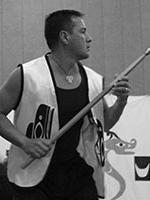Release Date:

We’re thankful for the thoughtful debate that took place in the House when considering this bill. Some lawmakers brought up concerns that HB 1308 would allow students to graduate easily and without achieving standards carefully laid out in law. It’s been rumored that, if passed, this law would allow any student to submit a social media post of themselves dancing in a video and receive their diploma (demonstrating they can fulfill art and physical education requirements). This is not true, and it does not respect the hard work our students would need to do to achieve the performance-based pathway. The law does not allow for this, and it is not what the bill would do. Rules on how a student must demonstrate they meet standards must be created by the State Board and approved locally in the performance-based pathway. There will also be state requirements about the safety and quality of the learning experience to ensure students are meeting the high standards we expect in Washington.
Our laws and requirements are in place for a reason. We need standards to ensure our students are understanding important concepts that will help them after school. The performance-based pathway does not diminish standards. In fact, research indicates that performance-based learning opportunities lead to deeper understanding and stronger outcomes. Through a performance-based pathway, students still meet the same state learning standards, but they are assessed using different methods. Educators evaluate their performance using scoring guides developed by the state.
The pathway requirement is on top of all the credits in math, English, science, and other core subjects that students must earn to show they have developed basic skills required for graduation. Pathway options are designed to give students additional ways to show they are ready for their own goals for after high school, and are required by law to align with those goals. This proposal allows for the local flexibility to offer a student-centered pathway that can be customized to the student’s interests, while committing to the state learning standards in core subject areas. This bill is about giving students real world, hands-on opportunities to show they are ready for success after high school. As always, we need to assess our students with teachers certified in relevant subjects and based on a state assessment framework, but to fulfill the purpose of graduation pathways for all students, we must provide students with pathway options that can be tailored to their goals.
Most of us know what it's like to cram for a test and forget it the next day, but we remember the times when we actually got to take part in performing the skills in a real world way. This resonates with one of my own most powerful learning experiences. As a freshman in high school, my family moved from Shelton to the Metlakatla Indian Community in Alaska. It was the first time I remember being in a space where the culture of the students and community was expressed everywhere, and hands-on learning was key. There were marine biology classes in the field, and courses to prepare students for maritime careers—how to work on a fishing boat or repair nets. Lightbulbs that traditional education left dark were suddenly illuminated for me. We hear the same from our kids and communities in Washington today asking for authentic learning opportunities.
Washington students deserve more engaging and meaningful learning. Having documented evidence of hands-on learning elevates the whole educational experience, can be inclusive of students’ cultures, raises a deeper understanding of core subject areas, and improves a students’ chances at success in an ever-changing world and employment landscape.
Bill Kallappa
Chair
Washington State Board of Education
Learn more about the request legislation here: sbe.wa.gov/waleg.

